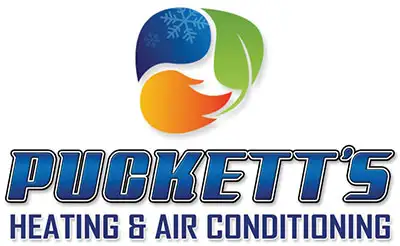When it comes to creating comfortable, energy-efficient spaces in your residential, light commercial, or new construction property, one often overlooked yet crucial aspect is air flow balancing. Air flow balancing is a process that ensures the proper distribution of warm or cool air throughout a building, resulting in an optimal level of comfort for all occupants.
Air flow balancing involves adjusting the air distribution in your HVAC system to provide even and consistent heating or cooling throughout your space. Without proper balancing, you may experience cold or hot spots, areas with insufficient air flow, or excessive drafts. These issues can lead to discomfort for occupants, as well as increased energy consumption and strain on your HVAC system as it compensates for imbalances, eventually resulting in higher energy bills and reduced system lifespan.
Our team of professionals has the expertise and experience needed to assess your home or office’s air flow and recommend the necessary steps for optimum balance. With a thorough understanding of HVAC system design and the factors that impact air flow, we can work with you to create a more comfortable and energy-efficient environment for your property.
Read on as we discuss the fundamentals of air flow balancing, its importance for HVAC system performance, and how our technicians can help assess and balance your home or office’s air flow for maximum efficiency and comfort.
Identifying Common Symptoms of Imbalanced Air Flow
Whether you have a newly installed HVAC system or an older one in need of maintenance, imbalanced air flow can lead to a number of issues within your property. Be on the lookout for the following symptoms, which may indicate an imbalance in your system:
1. Uneven Temperature Distribution: One of the most evident signs of air flow imbalance is uneven heating or cooling throughout your space. Some rooms might feel excessively cold or warm compared to others, creating discomfort for occupants.
2. Drafts: If you notice drafts or strong gusts of air coming from your vents, it could be a sign of an issue with air flow distribution within your HVAC system.
3. Noisy Operation: A struggling or overworked HVAC system may produce unusual noises or vibrations, which can be traced back to imbalances in the air flow.
4. Increased Energy Bills: As your system tries to compensate for imbalances, it may consume more energy, leading to higher utility bills.
Should you detect any of these symptoms, it’s essential to have our experienced technicians assess your system and address any air flow issues as soon as possible.
Factors Affecting Air Flow Balance in Your HVAC System
Several factors can impact the balance of air flow in your residential, light commercial, or new construction property. Some of these factors include:
1. Duct Size and Layout: The size and design of your ductwork can significantly affect how air is distributed throughout your property. If ducts are too small, they may restrict or limit air flow, creating imbalances. Similarly, if ductwork is designed with too many bends or turns, it may cause inconsistencies in air distribution.
2. Vents and Registers: The placement and condition of your vents and registers play a crucial role in air flow balance. Blocked, dirty, or improperly placed vents can prevent air from reaching certain areas of your property, leading to discomfort or inefficiencies.
3. Air Filters: Clogged or dirty air filters impede air flow and can contribute to imbalances. Regular filter maintenance and replacement are necessary to ensure healthy and balanced air flow.
Understanding these factors can help our technicians better assess and address any air flow imbalances in your HVAC system.
Air Flow Balancing Techniques and Tools
To achieve a balanced and efficient HVAC system, our technicians employ a variety of techniques and tools. These include:
1. Air Balancing Hood: This device measures the air flow coming from a vent or register, allowing our professionals to determine if adjustments are needed.
2. Anemometer: This instrument is used to measure air velocity within your ducts and vents, providing crucial information for achieving balanced air flow.
3. Dampers: By adjusting dampers within your ductwork, our technicians can control the volume of air passing through specific areas of your property, effectively regulating air flow balance.
4. Vent and Register Adjustments: To further fine-tune air flow balance, our professionals may adjust the positioning of vents and registers throughout your property.
Our team is well-versed in the implementation of these techniques to ensure your HVAC system operates with optimal air flow balance, resulting in improved comfort and efficiency.
The Value of Regular HVAC System Maintenance
Regular maintenance of your HVAC system is essential for maintaining consistent air flow balance and preserving the health and performance of the system as a whole. During these maintenance visits, our technicians will assess your property’s air flow, clean or replace filters, examine and adjust dampers, clean and check the ductwork, and perform other critical tasks to keep your system in top working condition. With regular check-ups, you can avoid potential air flow imbalances and other issues that can lead to inefficiencies and discomfort.
Experience Enhanced Comfort with Proper Air Flow Balancing
Air flow balancing is a vital aspect of maintaining a comfortable, energy-efficient indoor environment in your residential, light commercial, or new construction property. By addressing and correcting imbalances, you can promote the even distribution of warm or cool air, prolong the lifespan of your HVAC system, and ultimately, enjoy a more pleasant and sustainable living or working space.
Let our dedicated technicians at Pucketts HVAC guide you on the path to optimal air flow balancing in Maryland and Delaware. With our expertise and commitment to quality service, you can trust us to provide the solutions you need for a comfortable and efficient indoor environment.



